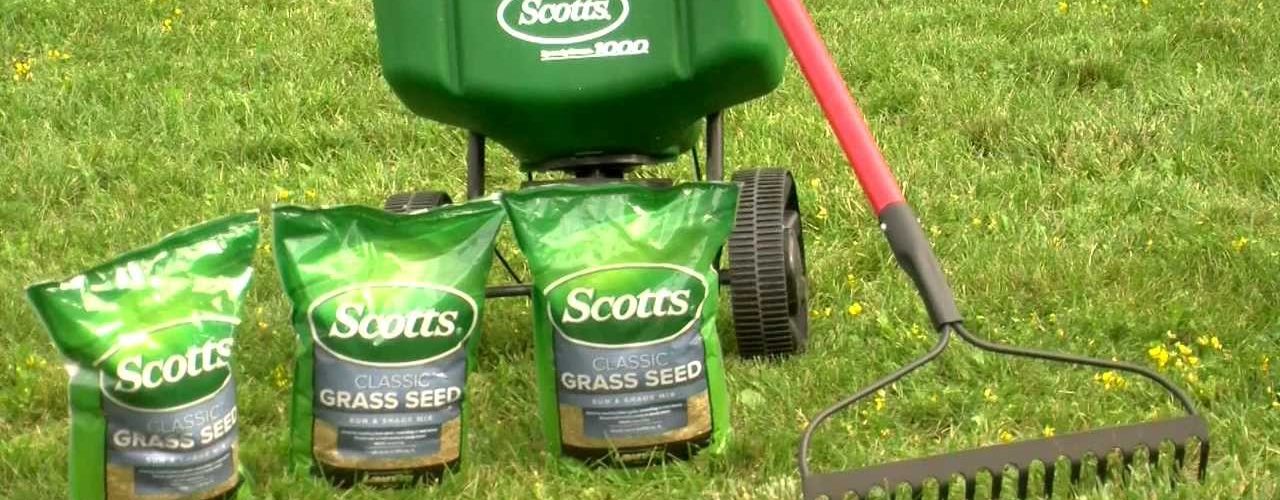If you have bare spots in your lawn, or you’ve decided to start fresh with packed earth, reseeding your lawn is best done in early fall. As the temperature cools off, your new grass seed has a chance to grow before winter settles in. If you are planting new grass seed in bare spots around your yard, the first thing you need to do is to rake or turn the soil.
This will oxidize the soil, allowing more moisture to get in, and will make the ground more fertile for new seeds. Before sprinkling the new grass seed, apply an even amount of lawn fertilizer to accelerate growth. Plant the new seeds by hand, applying lightly to the entire area. Too much grass seed will be wasted if you dump it over the affected area. Not all the grass seed will survive, so this keeps wasted seed to a minimum.
If you need more fertilizer in places where the ground has been barren for a long time, feel free to add liberally. After the new seeds have been planted, cover them with a thin sheet of polyethylene or soft plastic. This is to be done only until the seeds have begun to germinate. The sheet will keep the moisture in the ground from evaporating. Pin down the sheet with rocks or other heavy debris from your yard.
The process for reseeding your entire lawn is somewhat different. If you’ve started with packed earth, you will want to rake it like in the steps above in order to create a good seedbed with the right amount of moisture and oxygenation. You will want to use a good seeder for applying the seeds and fertilizer to the entire lawn. Scotts makes good quality seeders.
Fill the seeder with the right amount of fertilizer for your lawn. The amount of fertilizer per square inch should be indicated on the bag. Walk at an even pace in a straight line until the ground is covered. Repeat this process with the seed. When you are through, use a sprinkler, moving it once an hour to cover the entire yard. This should provide adequate moisture to germinate the seeds. Over the next few days, apply more fertilizer by hand as needed. Do the same with the seeds in any barren spots that appear.
Before long, you should have a young, well manicured new lawn. Special products like Scotts Weed and Feed can accelerate growth more than just normal, ordinary grass seed. The kind of grass seed is up to you. Read the labels on the bags of fertilizer to find a fertilizer with the right ph balance that matches the seed and soil of your lawn. Be careful when fertilizing, as too much will kill the new grass. Continue to keep tabs on it for the next few days, even after it has begun to grow. During the first few weeks in particular, it will be healthy for your lawn if you mow it at least once per week. Mowing it twice a week would be even better.
This facilitates rapid growth as your lawn acclimates to the soil and takes root. Any lawn care specialist at Lowe’s or the Home Depot should be able to answer any questions about your particular situation. Most climates are conducive to laying new grass seed in early to mid fall as the temperature cools down. However, if you live in a southern or sub-tropical climate, you may be able to plant new seed year round. Use your best judgment, and take care not to overwater it after it has begun to grow normally. Most of its water and nourishment will come from the rain.



